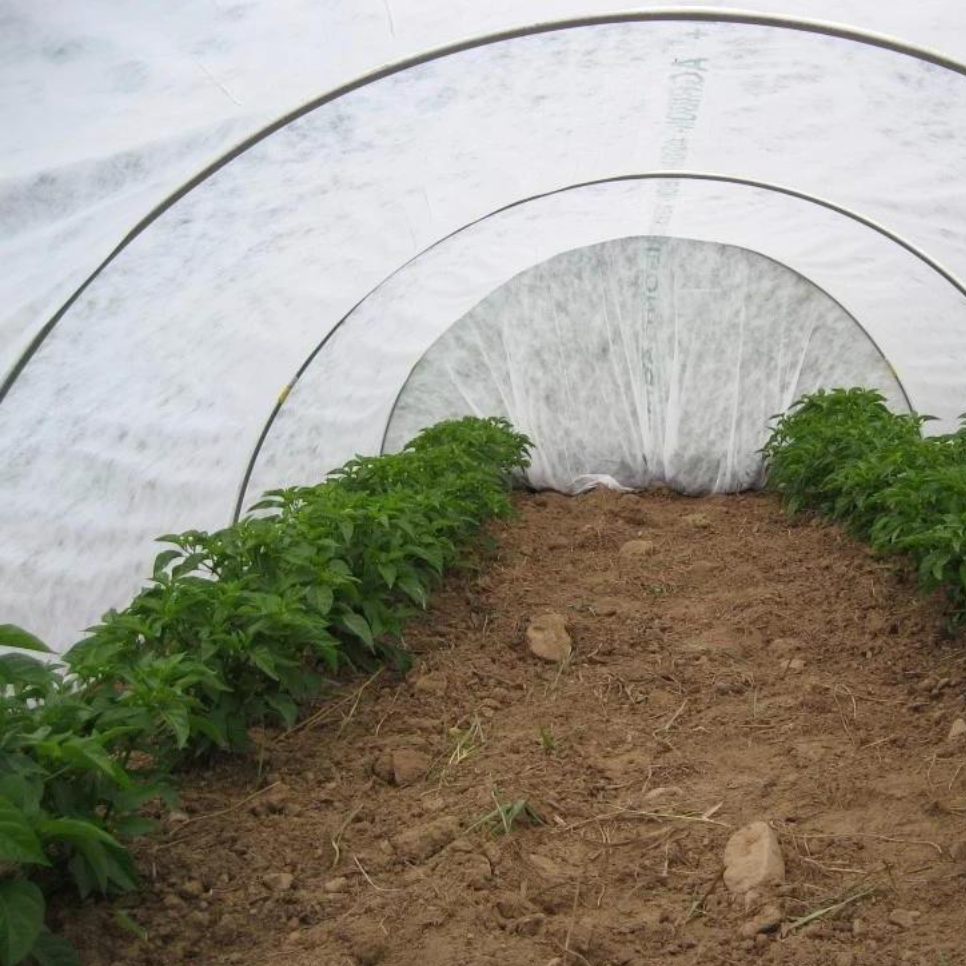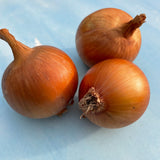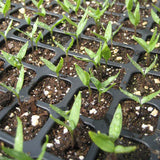
Planning for an Abundant Fall
Succession sowing is a great way to extend your season and make use of garden space. As we learned in Succession Success, succession sowing refers to methods that use timing of plantings to extend the harvest period of crops or make the harvest of one crop continuous over the entire season. For example, you might sow arugula seeds every two weeks so that you always have a supply of perfectly young and tender arugula all summer long. This method can be applied to the whole garden with an eye on extending the season through the end of fall. With a bit a time and planning and the use of inexpensive supplies, you can be harvesting fresh hearty greens and vegetables until the end of fall and even beyond!
Click here to read or listen to Ken's podcast with Margaret Roach on succession sowing. Read on for Erin's detailed info on making your succession plans.
Creating a garden plan is a great way to get the most out of your space and effort, and this is certainly true for succession sowing as well. A plan helps you prioritize and organize your space.
Here's how to create a garden plan for fall, plus how to put the plan in practice:
1. Map out your space with a timeline. Just like getting started in the spring, when planning for the fall garden it’s very important to get an idea of the space you will have and when you will have it. The majority of fall season succession sowing occurs mid June through August, just when many spring planted vegetables are coming out of the garden. Depending on when you planted in the spring, you will have empty space following peas, beets, onions, lettuce, Asian greens, arugula, garlic and radishes throughout late spring and summer. Create a list or a map with rough dates of when the space will be available. Example:
1. Garlic, 10 foot bed, out by July 15
2. Onions, 10 foot bed, out by July 20
3. Snap peas, 10 foot bed, out by July 20
4. Bush beans, 5 foot bed, out by August 5
2. List what you want to grow and the days to maturity, plus how many plants you want to plant. Make a prioritized list of what you want to have in your garden for fall. It's always good to know what you can't live without! (Here are the standards: kale, cabbage, broccoli, collards, cauliflower, brussels sprouts, chard, lettuce, asian greens, arugula, spinach, turnips, beets, carrots, peas, radishes.) It's a good idea to plant more greens than you think you might want. If you want to be able to eat a lot of kale in November, plan on have a good number of plants to supply you with the greens you need for several weeks when the time comes. Remember, you are planning for fall. While cold hearty greens won't die a the end of autumn, they won't grow back after you cut them quickly like they do in the summer.
When establishing the days to maturity, use what is listed for that variety, plus 2 weeks to account for the days getting shorter and cooling off towards the end of the summer. Keep in mind that if you are starting some seeds indoors (broccoli, kale, collards, etc) you need to add an additional two weeks to the maturity date.
1. Kale, 65 days, plus 4 weeks, 12 plants, 10 foot bed
2. Broccoli, 75 days, plus 4 weeks, 12 plants, 10 foot bed
3. Beets, 60 days, plus 2 weeks, 5 foot bed
4. Carrots, 65 days, plus 2 weeks, 5 foot bed
5. Storage radishes, 50 days, plus 2 weeks, 5 foot bed
3. Schedule your sowings. If you like puzzles, this is the fun part! Match the things that take a bit longer to the space that is available earliest, and the things that take less time to the space that is available later. You will also need to consider the space that your fall crops need. Here's how:
- First, establish the harvest dates for each item on your list from step 2. Most of the vegetables that are harvested in the fall benefit from a frost, so its a good idea to plan on having them ready to harvest at your first frost. Our examples use an October 15 harvest date. Remember, we won't be harvesting everything on October 15, we just want everything to be ready on October 15.
- Next, using the combination of the days to maturity and the additional time for fall and transplanting, count back from your harvest date to the ideal planting date for everything on your list. This will give you an idea of when you need to plant.
1. Kale, start indoors July 12 for October 15 harvest
2. Broccoli, start indoors July 4 for October 15 harvest
3. Carrots, sow July 21 for October 15 harvest
4. Beets, sow July 26 for October 15 harvest
5. Storage radishes, sow August 14 for October 15 harvest
- Now, see what matches your available space and timeline. This might rule out some things automatically if you don't have enough space at the right time, although, keep in mind that transplants go in the ground 4-6 weeks after they are started indoors. For example, you might start fall broccoli seeds indoors on June 21, but you don't need the garden space for them until end of July. You might also consider your garden rotation when putting the final plan together.
1. 5 foot bed carrots follow peas-late July
2. 5 foot bed beets follow peas-late July
3. Kale transplants follow onions-transplant in August
4. Broccoli transplants follow garlic-transplant in August
5. Storage radishes follow green beans-mid-August
Need, some help getting started? Here in the Northeast, I have found that the timing and space works well for the following succession pattern. These also work well in my annual garden rotation. Outside sowing/transplanting dates are in parentheses:
Red Cored Chantanay carrots follow peas. (Mid-late July)
Detroit Dark Red Beets follow onions. (Early August)
Broccoli, kale, cabbage and other transplants follow garlic/onions. (Late July/Early August)
Radishes, Asian greens and other quick greens follow early potatoes and/or mid-season green beans. (Mid-late August)
Dry bush beans follow early greens. (Early July)
Once you have completed step 3, you've got a fall garden plan! Here's some helpful tips to keep in mind when executing the garden plan:
1. Allow for some changes in your plan. Following a garden plan is always a good idea, however, things don't always go according to plan! You might need to move some things around a bit to account for weather and timing issues that are unexpected.
2. Prepare the soil before planting a new crop. Be sure to prepare the soil by weeding, aerating and adding some compost or a well-balanced soil amendment. The plants you are pulling out took nutrients from the soil, and your fall crops will thank you if you put a bit of care back.
3. Use season extension tools to keep the harvest going. Cold hearty vegetables won’t die after the first frost, though they will stop growing. After continual freezes, the plants do get worn out and can start to turn yellow and fade. Keep them going strong once the weather cools with low hoops and a protective covering such as row cover. Row cover adds about 5-7 degrees of warmth.
Helpful tips and Notes:
*Keep in mind that all varieties have varying days to maturity, check the Quick Facts section for each variety on our website for the specific days to maturity for your crops.
*Sometimes, the weather cooperates in our favor for fall abundance, sometimes not. If your broccoli never heads up, for example, make use of the plant by eating the delectable greens.
*Keeping a record of your garden plan helps you become a better successive sower each year and allows you to better tailor your planting for your own needs. You can keep things the same or make changes to your plan each year based on your records.









